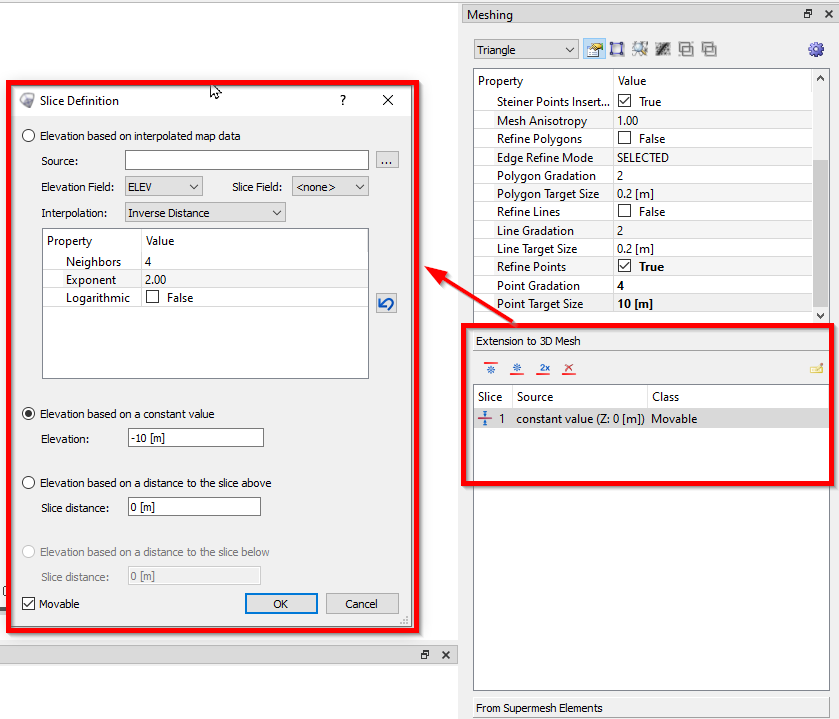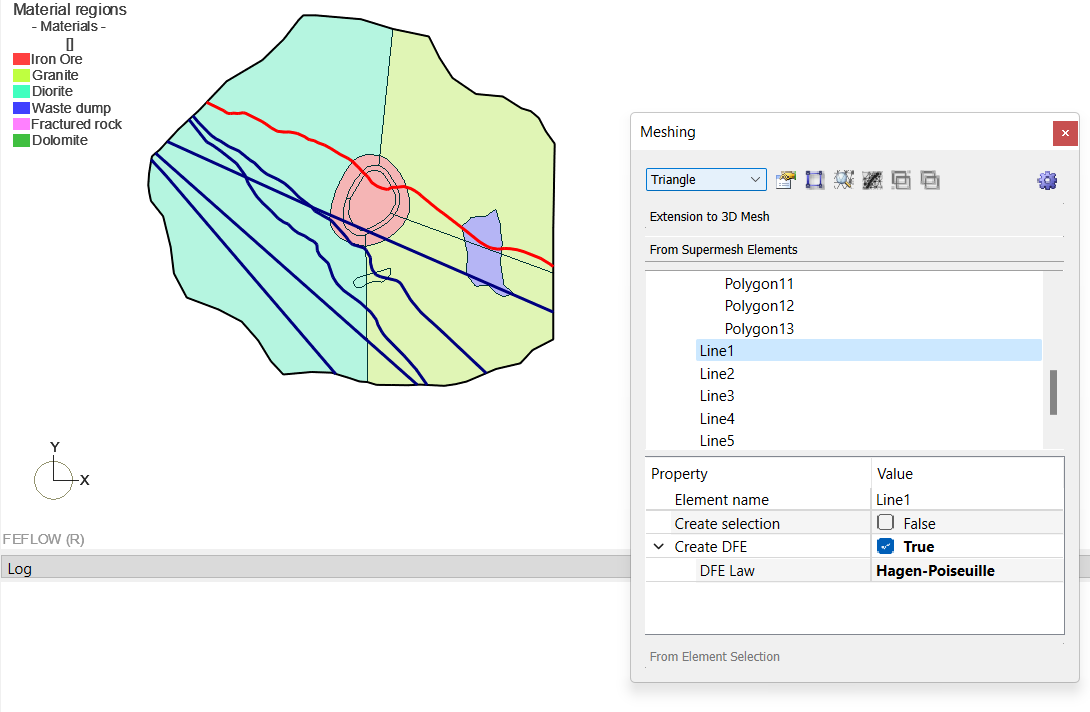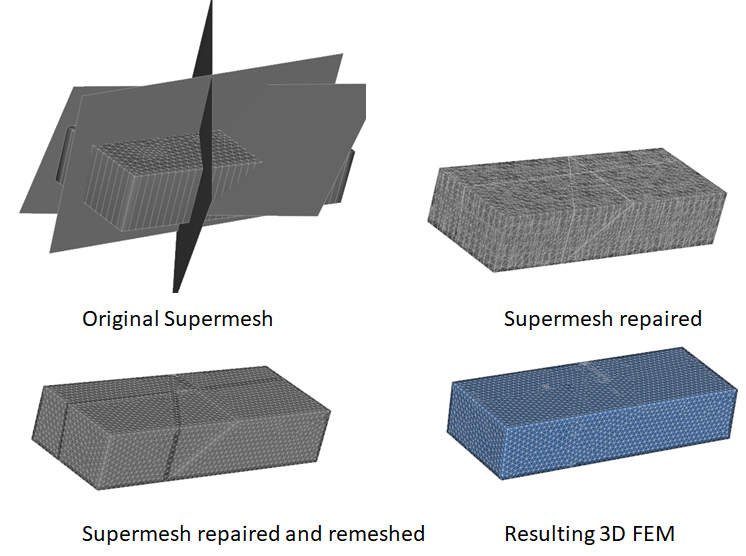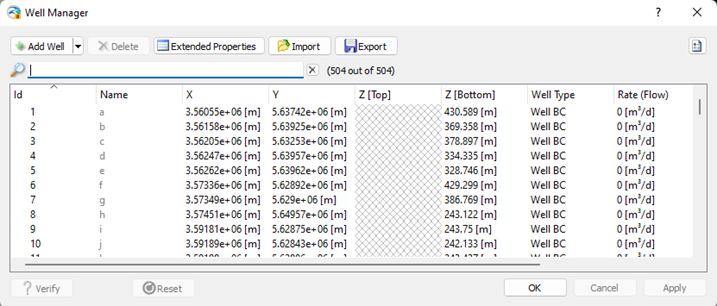What's new in FEFLOW 8.0?
This is a major FEFLOW release with a number of new exciting software features. The highlights of the release are:
-
New workflow for 3D model building.
-
Extended workflows for model conceptualization.
-
3D Supermesh repairing.
-
New Well Manager editor
-
Official release of the Cloud Simulations panel in the FEFLOW and FePEST GUIs.
-
Enhanced features for FePEST parallelization.
-
New Python implementation of the Well Manager (available only with 8.0.2).
-
New 3D Supermesh Tools for interactively create 3D geometries (available only with 8.0.2, see here).
-
New 3D mesh generator for tetrahedral meshes (available only with 8.0.2, see here).
-
Several usability improvements.
A detailed description of the major software features is presented below:
New workflow for 3D model building
The new workflow introduces the possibility to define all the elevation data for building the 3D FEM problem already at the 2D Supermesh level. The Meshing panel now has the section Extension to 3D Mesh, which allows the user to insert slices, their elevation data (constant or interpolated) and any relationship between slices, e.g., a slice can depend on its uppermost / lowermost neighbour.
After defining the elevation information, the user can run an entire workflow from 2D mesh creating up to the 3D finite-element mesh with just one-click. In cases of slice conflicts (intersections and/or pinching), the Layer Resolution dialog allows the user to decide whether the final 3D model should be layered-based, partially-unstructured or fully-unstructured model.

"Extension to 3D Mesh" in Meshing Panel.
Extended workflows for model conceptualization
The release offers also additional steps into the model conceptualization. Now geometries such as points, lines and polygons in the 2D Supermesh have a meaning. The Properties section of the Meshing panel allows the user to define attributes to lines and points. In combination with the new Entities panel in the Supermesh, attributes to Supermesh polygons, lines and points can vary between slices. Of course, all this information can be assigned before the 2D mesh generation. Thus, all these features with the new 3D workflow for model building can be nicely combined to assign relevant parameters to the 3D FEM problem with a 2D dataset.

Extension of the Supermesh Property section in the Meshing panel.
3D Supermesh repairing
FEFLOW's 3D unstructured meshing capabilities were highly limited by the non-conformity of user-data in many cases. The new Surface Retriangulation panel offers a set of tools to repair any improper 3D data (geometries with non-conformities) such as surfaces and polylines imported into FEFLOW and subsequently increase success with building a complex 3D mesh. Moreover, all this new functionalities in FEFLOW allows the user the possibility to easily integrate new datasets to the 3D Supermesh.
In addition, a new algorithm for surface re-triangulation is offered in order to re-mesh (surface) all the repaired surfaces.

Example of 3D Supermesh repaired and remeshed with the resulting 3D FEFLOW mesh.
Explore the properties of this new feature here.
After the Supermesh Repair/Remesh, you can now take advantage of the 3D mesh generator powered by Geode. The option is available from the list of generators in the Meshing panel and only supported for 3D Supermeshes.
New Well Manager editor
A new window, the Well Manager, offers a new way to create, edit and delete one of the most important boundary conditions in a groundwater model: a groundwater well. The new Well Manager offers, amongst other functionalities:
-
A central location to control all the groundwater wells (flow, mass and heat).
-
Well BC, Multilayer Wells and Borehole Heat Exchangers can be easily created either from Selections (usual FEFLOW procedure) or via manual input of coordinates.
-
An import functionality allows importing hundreds of wells with just a few clicks.
-
A convenient search functionality to look for wells, Time Series names, etc.
-
Feedback during the well creation procedure, e.g. Well Manager can identify conflicts with already existing wells.
-
Combination of several problem classes, e.g. an injection well defined with a Well BC and Mass Concentration BC
-
Interfacing to 3D partially- and fully-unstructured models

Example of Well Manager window
Explore the properties of this new feature here.
The Well Manager is also available via the FEFLOW - Python interface. You can create, edit and delete any type of well (Well BC, Multilayer Well and BHEs).
Cloud Simulations panel in the FEFLOW and FePEST GUIs
With the release of FEFLOW 8.0, model run (s) can be executed in the cloud using DHI MIKE Cloud infrastructure. The deployments of the model run (s) are done following a one-click solution approach directly from FEFLOW and/or FePEST graphical interfaces. You can forget about preparation of remote desktops, administration cost/time of managing multiple machines, among other. The new Cloud Simulations panel is capable to run several jobs at the time with a flexible set of virtual machines, which could support you in all the different groundwater projects.
During the runtime, you can easily monitor the FEFLOW results through the new interactive Cloud Charts on real time. There is no need to wait until the run is completed! You can find more information how to get started with FEFLOW Cloud Simulations here.

Example of model run progress
Extended FePEST Parallelization Status panel
The new Parallelization Status panel in FePEST allows the user to include additional workers during the PEST/PEST++ run. With a simple click, new local and external workers can be attached to the run. Moreover, the panel offers also an overview of the CPU and Memory consumption, so the user can take the proper decisions before adding more workers to the run.

Example of model list with several model runs
Several usability improvements
The release includes a numerical of usability improvements such as:
-
New search functionality in the Selections panel.
-
Possibility to split an existing FEFLOW's selection in several items.
-
Active several selection sets via keyboard combinations.
-
Extension of FEFLOW-Python interface for support up to version 3.11.
-
Extension of FEFLOW-Python interface for supporting external Python's packages through the FEFLOW's console.
-
Add slice/layer numbers to the FEFLOW's views for better navigation.









